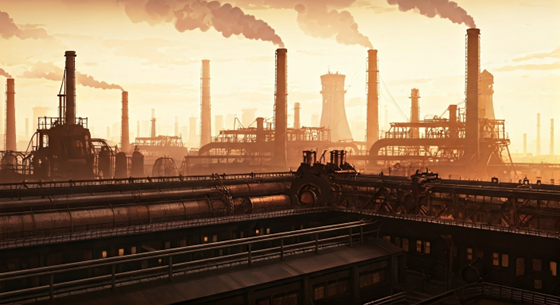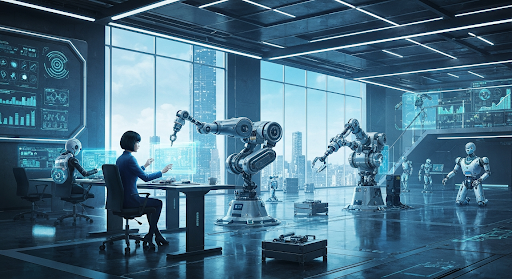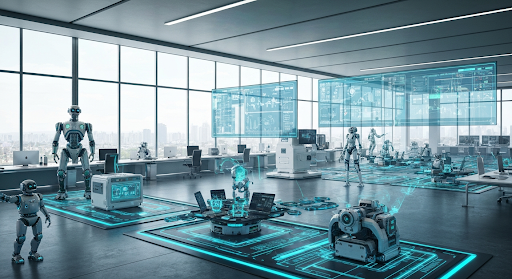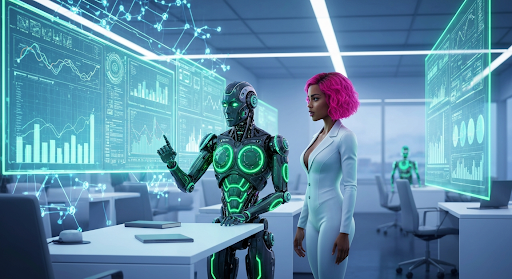Exploring Automatic Manufacturing: Key Trends and Insights
Exploring Automatic Manufacturing: Key Trends and Insights
Key Highlights
- Automatic manufacturing employs cutting-edge technologies such as industrial robots andcontrol systemsto revolutionize production processes and improve efficiency.
- The progression from manual labor to programmable automation has redefined the roles of manufacturing workers and reshaped factory operations.
- Technological advances like the Industrial Internet of Things (IIoT) and artificial intelligence fuel the rapid evolution of automated systems.
- Flexible automation systems now allow the same facilities to produce multiple product styles with ease.
- Whileautomatic manufacturingimproves product quality and reduces labor costs, integrating these systems with aging equipment and upskilling workers remain significant hurdles.
Introduction
In today’s world, automatic manufacturing is changing the way we do things in factories. It uses automated systems, artificial intelligence, and industrial automation to make the production processes better. The use of IoT also helps by bringing in new ways to monitor and control the workflow. These changes remove problems, lower human error, and help people in the plant work faster and better. So, production in manufacturing plants gets easier for everyone involved. This is a big step, not just a small improvement. It is a true digital transformation that fits in with the goals of Industry 4.0. With this new setup, businesses can use data to make sure everything is high-quality. Now, let’s look at how automatic manufacturing is setting new, higher standards in today’s industry. Beginner's Guide to Automatic Manufacturing: Key Concepts
The Evolution of Automatic Manufacturing
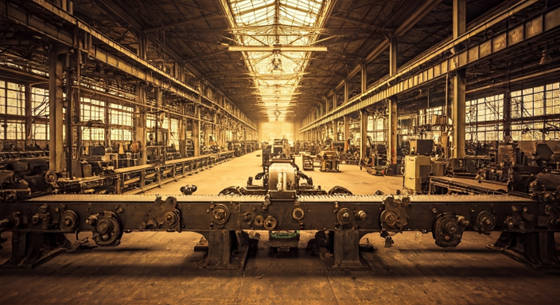
The manufacturing process has changed a lot over the years. Long ago, people used simple hand tools for many tasks. Then, during the industrial revolution, machines and tools started to take over work that was once done by manual labor. Step by step, those early machines turned into the programmable and digital systems that we have now. This show how new technology can help the industry grow and move forward.
Today, advanced automation does more than just take care of the jobs that are repeated again and again. Now, it also brings different steps in the factory together and makes things run smoother on the factory floor. By using the best of what people can think of and the speed of machines, we are ready for Industry 4.0. In this new age, smart factories will keep getting better and working well.
From Manual Processes to Mechanization
In the early days, most manufacturing jobs needed a lot of manual labor. Human workers had to do the same tough tasks again and again. These ways of making things took a lot of time and often had human error. Because of this, the quality of the product was not always the same. For example, old craftspeople used hand tools. These tools, worked by hand, did not have the accuracy needed when more people wanted the product.
Then things changed with mechanization. Factories started to use machine tools that ran with steam or water. These new tools made things much faster and helped workers do their jobs with better accuracy. People started to see machines do certain tasks much better and at the same time every time.
Over time, assembly lines took the place of tough manual labor. This was the start of today’s automatic manufacturing. Now, working with machines was not just about getting more out of every hour. It also made products better, kept people safe, and stopped the mistakes that often came from human workers doing the same thing again. These steps forward, like using machine tools, made the way we make things today totally different from before.
The Impact of the Industrial Revolution
With the industrial revolution, new ways to make things took the place of the old craft-based economy. The assembly line and hard automation became important as they allowed factories to make goods much faster. Henry Ford showed this with his moving production line for cars. This change cut down the time it took to make a car and made it possible for the working class to buy one.
Production lines changed many industries and helped bring about big economic growth. These systems improved how much people could make in less time. To keep everything running, the factory floor had to be set up the right way. Hard automation tools, like powered rollers, conveyor belts, and transfer lines, became part of the usual workflow.
The rise of these systems helped boost economic standards everywhere. Manufacturing turned into a way for countries to grow and build wealth during the industrial revolution. Today’s processes in factories, which use digital tools, still have their start in this important period.
The Rise of Digital and Smart Factories
Digital transformation has changed the way things work on the factory floor and has given rise to smart factories. These smart factories are known for having connected systems and using the internet of things (IoT). The machines and sensors in these factories use real-time data. This data helps people and systems make better choices to improve the way the production processes work. Sensors and automation software are always sending information to each other, making sure production stays on track and can change when needed.
Smart factories also bring in things like machine learning and artificial intelligence. With these, automated systems can look at the data from the shop floor to suggest what actions to take next. Because of that, people can keep working on continuous improvement. For example, the automated systems can find patterns that show if a machine is wearing out before it actually breaks.
Moving to smart factories means a big change for the better in how factories work. Robotic systems and IIoT devices now talk to each other, which helps everyone see what is happening in the supply chain. Because of this, smart factories are seen as the future of manufacturing. They are places where choices can be made based on the right data, and using resources in the best way is more possible than ever before.
Core Technologies Driving Automation
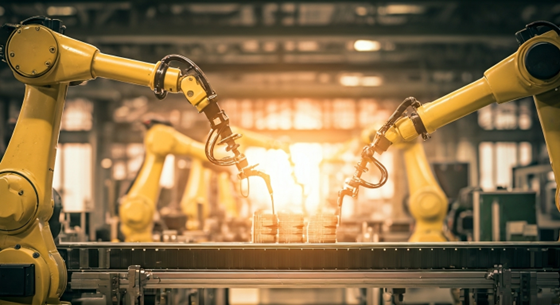
strength of automated manufacturing comes from using the latest automation technology. Industrial robots and advanced automated systems are at the heart of this change. These tools and machines have taken the manufacturing process to a new level.
When robots, smart AI tools, and IIoT sensors work together, they help every production step run better. These technologies do not just boost how much work gets done. They also keep the product quality high and steady. All types of automation in this field have improved because of them. They make every part of the process easier and smoother. In the next part, we will look at which technologies shape the base of modern automation systems.
Robotics and Collaborative Robots (Cobots)
Robotics has changed the way companies work in manufacturing. This is clear with the rise of collaborative robots, or cobots. These automated systems are used with human workers, not in place of them. Cobots help boost how much work gets done by working with people on the same tasks. They will help to make things safer and more flexible. You can add them to current production lines with ease.
Cobots keep human error down and help with real-time data analysis. These tools support continuous improvement, helping to make factory work better each day. The many ways you can use cobots lets them fit with different types of automation. This means they will work well in all kinds of manufacturing facilities. Because of this, cobots help bring customer satisfaction and drive economic growth across the industry.
Industrial Internet of Things (IIoT)
The Industrial Internet of Things (IIoT) connects many devices to help factories work better. It boosts machine-to-machine talk and quick data analysis. With a focus on real-time control systems and seeing what happens as it happens, IIoT helps to make production processes smoother and cuts down on downtime.
When companies add automation and the internet of things into their old manufacturing plants, they get better at what they do. This means higher production rates and teams can get clear ideas to help with continuous improvement. Digital transformation in these areas lets industries use data to work in new ways. It opens the door for more growth and helps raise economic growth in many sectors.
The move to industrial automation and better control systems in manufacturing plants also means people can keep making things faster and better. All this creates high production rates and gets industries ready for new changes in the future.
Artificial Intelligence and Machine Learning Applications
Artificial intelligence is taking automation to new heights. In many manufacturing plants, AI helps make things better all the time by using production data to improve key steps. For instance, inspection systems with machine learning now find problems faster than people can.
These systems give real-time analysis and also help plan tasks so supply chain operations can run smoothly. Automation software that uses artificial intelligence can see where issues might come up and help keep things moving without big stops.
Machine learning is also key for inspection systems. It makes product quality better by spotting bad spots in materials more accurately than before. This means more work gets done on the factory floor and customers are happier, too. As people use artificial intelligence more, it’s clear that process automation is moving ahead because of this technology.
Types of Automatic Manufacturing Systems
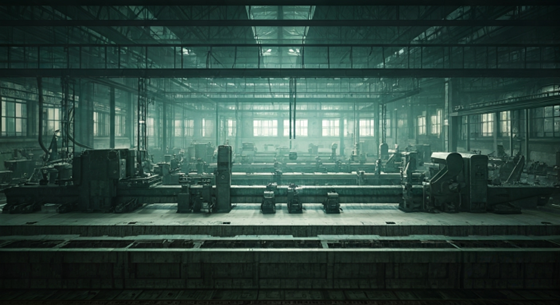
Good automation solutions help many different kinds of manufacturing processes in many industries. To meet their needs, manufacturers often choose from three main types of automation: fixed, programmable, and flexible systems.
Each of these types of automation is used to solve different problems in how things are made. Fixed automation works well when you need high production rates. Programmable automation lets you change things when product styles update. Flexible systems are great if there are a lot of design changes. So, these choices help companies deal with any changes in production and work better. Next, we’ll look at what makes each of these types of automation systems stand out and how businesses use them in the right way.
Fixed (Hard) Automation
Fixed automation, also called hard automation, is a way of making things that uses special equipment to carry out production processes. This type of automation works best when you have to make a lot of the same product. It uses solid assembly lines and machines made just for the job. With this, you get less human error and better efficiency. The work is split into jobs that do not change much, so programmable automation gives the control you need. This type of automation can help organizations get higher production rates and lower labor costs by a lot.
Programmable Automation
Programmable automation is a smart way for companies to stay flexible. It is great for production lines that often need to change what they make. This system uses numerical control so machines can work on a variety of products with ease. Many businesses, like those that make consumer electronics, choose programmable automation for managing frequent design changes.
In this setup, production equipment can switch between jobs when needed. At the same time, it still meets the exact needs of today’s industries. But, every change takes a bit of time because each machine will need new steps or instructions. This can slow down the work a little while updates happen.
Even with short breaks for reprogramming, businesses keep their edge using programmable automation. They can keep up as the market changes. It does not matter if the company wants to make products in large numbers or focus on special, custom designs. Programmable automation systems help every step of the way through all these changes.
Flexible (Soft) Automation
Flexible automation is known for its ability to easily adjust and meet changing production needs. This type of automation uses control systems and robotics that help manufacturing plants quickly switch between different kinds of products with very little downtime. With machine learning and real-time data analysis, these systems make the factory floor more ready to react to market shifts. This helps raise efficiency in the process.
Flexible automation lets manufacturing plants handle frequent design changes fast. This helps them respond to what customers want and boosts customer satisfaction. At the same time, it can lower energy consumption and cut down on labor costs, which makes the whole operation better for the company.
Key Applications Across Industries
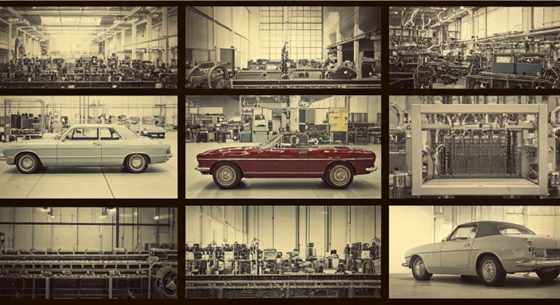
Many industries use automated systems to help with production processes and to be more efficient. In automotive and aerospace companies, people use industrial robots and robotic arms on assembly lines. This helps to cut down on human error and also boosts production rates. In electronics and semiconductor work, factories use programmable automation and control systems. These let them get a high level of precision and good quality. The food, beverage, and pharmaceutical companies rely on automated systems to always watch and inspect what is happening. This helps them stick to safety rules, manage their resources in a better way, and waste less.
Automotive and Aerospace
Major changes in automatic manufacturing have changed the way the automotive and aerospace industries work. Companies now use industrial robots and robotic arms in their production processes. These machines help speed up the work and make assembly lines more accurate. The use of artificial intelligence and machine learning has helped a lot too. The technology lets them look at real-time data and controls inventory so things run smoothly.
With frequent design changes and different product looks, flexible automation lets companies make custom products fast and still keep high production rates. This kind of automation also helps keep product quality high. As a result, customer satisfaction grows. These changes have boosted efficiency and help meet the needs of customers better.
Electronics and Semiconductor Manufacturing
Food, Beverage, and Pharmaceutical Production
In the food, beverage, and pharmaceutical sectors, automation technology is helping to make production processes safer and more efficient. Industrial robots take care of tasks that need to be done again and again. Collaborative robots, or cobots, work with people and help reduce human error. The use of the Internet of Things (IoT) allows real-time monitoring, which helps keep track of the supply chain, check energy consumption, and spot problems quickly. These new changes make product quality better and lead times shorter. This lets manufacturers quickly adjust to frequent design changes and what customers want. Such steps are good for economic growth and help improve customer satisfaction.
Benefits and Value Propositions
Using automation technology in manufacturing helps improve productivity and efficiency. Automated systems make production processes faster and smoother. This can help to get more products made in less time, with fewer mistakes made by people. Advanced control systems help to make each batch the same, so product quality and consistency stay high.
One big reason to use automation is cost reduction. Automation lets businesses use their resources better and cut down on labor costs. This change also helps lower energy consumption. In the end, using automation technology helps drive economic growth, making it important in today’s manufacturing world.
Enhanced Productivity and Efficiency
The use of automatic manufacturing helps the manufacturing process get better and faster on many production lines. With industrial robots and automation software, people can get high production rates and cut down on human error. This new way lets the team watch and control things as they happen, so they use their resources well. Also, flexible automation makes it easy to change to new product styles fast. This means companies can react quickly to what the market wants. In the end, the manufacturing process works better, and the company gets even greater results.
Improved Product Quality and Consistency
Automated systems help a lot with product quality and making sure things stay the same in different manufacturing processes. When companies use control systems and machine learning, they can cut down human error. This means each product can meet high quality standards every time. With this kind of reliability, customers feel more satisfied and send back fewer products. This helps to make the brand much stronger.
The use of data analysis for continuous improvement makes it easy for manufacturers to change to new product styles and still keep high production rates. The mix of automation technology and old-school craftsmanship is bringing a new time where things get done with more precision on the factory floor.
Cost Reduction and Resource Optimization
Using automation technology can help companies cut costs and use their resources better in manufacturing facilities. When businesses start using automated systems, they can lower labor costs that come from doing many things by hand. This also helps to cut down on human error during work on the factory floor. Taking this path makes it easier to run daily jobs and can also drop energy consumption in the whole factory.
When companies use data analysis to guide their choices, they can manage inventory better. They can also start just-in-time production, so the supply chain can react faster to what people want now. This not only meets changing market needs but also brings better customer satisfaction.
Challenges and Considerations in Adoption
Adopting automatic manufacturing brings some clear challenges that the company must face. It can be hard to connect new automated systems with old ones, and the company needs to plan well to make sure they work together without many problems. The workers also need to learn new skills to use the new technology. Some human workers may worry about losing their jobs, so it's important to use good ways to help them feel safe and help them through the changes. Getting past these issues is key for a company to use automation well. When this happens, the business can get many of the good things that automation gives and help everyone keep improving, even as manufacturing keeps changing. Continuous improvement is important to help both people and systems grow together.
Integration with Legacy Systems
Legacy systems can make things both harder and better when it comes to automatic manufacturing. Bringing together these older systems with today’s automation technology is not easy. This work usually needs complex control systems and a lot of programming. If you do it right, you can improve production processes. You get real-time data analysis, and you can manage inventory better. But, doing this can cost a lot. You also need to change the way things are set up so that the old and new work well together. This helps the factory floor run smoothly and allows for more continuous improvement and better efficiency.
Workforce Upskilling and Change Management
Embracing automation means we need to focus on upskilling the workforce and managing change well. When manufacturing plants start using advanced tools like robotics and artificial intelligence, the gap in skills gets bigger. That is why training programs are so important now. Good training helps human workers work to their best with automated systems. This can also cut down on human error. Change management helps people move smoothly from old ways to new, automated processes. It also builds a culture of continuous improvement. In this new age, companies that make these things a top priority can grow, do better work, and meet the new needs of modern manufacturing.
Conclusion
The use of automatic manufacturing is key for new ideas in many industries. When companies use automation solutions, they can get more work done. They can also make better products and spend less money on labor costs. As more businesses choose digital transformation and use new technology like artificial intelligence and the industrial internet of things, economic growth can be strong.
When they face problems, like working with older systems, companies can still get the benefits of automation. This can help them start better ways to work and keep their customers happy with higher product quality and new service. In the end, using these tools well can also help the company, the people who work there, and the customers that buy from them.
Frequently Asked Questions
What distinguishes automatic from manual manufacturing?
Automatic manufacturing uses machines and technology to make things run more smoothly. This helps with getting tasks done faster and with the same quality each time. On the other hand, manual manufacturing needs people to do the work by hand. The choice between these two ways changes how much can be made, the product quality, and how much it will cost to run the business in different types of industries.
How does automation impact employment in manufacturing?
Automation in manufacturing may cause some people to lose their jobs. But, it also brings new types of work that need advanced skills. As businesses start to use more automated technologies, it is important for the workforce to learn new skills. This will help employees keep up with changes and do well in the new world of production.
Are there risks associated with adopting advanced manufacturing technologies?
Yes, using new manufacturing technology can bring some risks. The main ones are that the start-up costs can be high, it may be hard to mix the new tools with what a company already uses, and workers may need training to keep up. To make sure things work well now and later, companies have to look into these issues closely.
What are the initial investments required for automation?
You need to pay for equipment, software, and adding new technology when you first set up automation. On top of that, there could be costs for training your workers, upgrading the building, and keeping things running right. Knowing about these costs can help you plan your budget better. It will also help you get the most out of your investment.
How can small and medium enterprises (SMEs) benefit from automation?
Small and medium businesses can use automation to make how they work better. It can help cut down on costs and boost product quality. When companies start to use automated solutions, they can make their work go smoother and use their resources in a better way. This helps them stand out and be stronger than others in the market.
What are the key advantages of automatic manufacturing?
Automatic manufacturing offers numerous advantages, including increased efficiency, reduced labor costs, and enhanced precision. Automation streamlines production processes, minimizes human error, and boosts output rates. Furthermore, it allows for consistent quality control and can quickly adapt to market demands, making it a crucial component of modern industry.

